
Karius Spectrum AMR Detection
Drug-resistant infections threaten millions of people each year, including hospitalized and other high-risk patients.
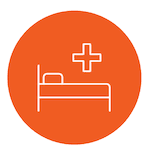
>2.8M people are sickened by drug-resistant infections annually in the United States, with 35,000 deaths1
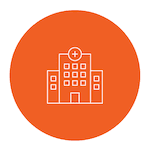
~70% of pathogens causing bacterial infection in hospitals are resistant to at least one prevalently used antibiotic in the United States2
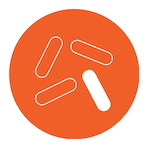
~27% of pathogens causing infections after chemotherapy are estimated to be resistant to standard prophylactic antibiotics in the United States3
Ability to target therapy is often limited by culture-dependent methods with low yield in hospitalized patients.4
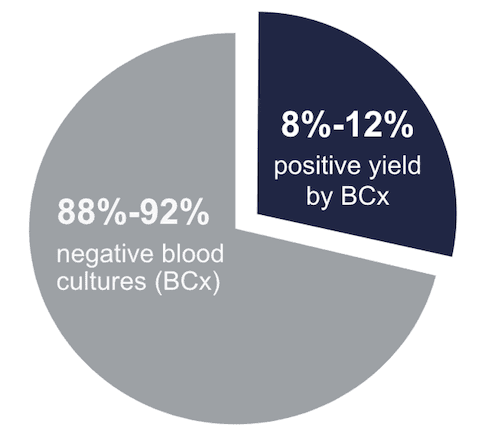

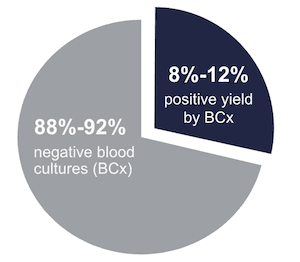
Karius Spectrum AMR Detection Capabilities
The Karius SpectrumTM test, a minimally invasive liquid biopsy for infectious diseases, is the first commercially available plasma based, culture-independent test with AMR marker detection, designed to help clinicians use targeted therapy to help improve patient outcomes. AMR capabilities include detection of antimicrobial resistance for 18 bacterial pathogens and 4 classes of antimicrobial resistance:
- Methicillin-resistant Staphylococci (SCCmec, mecA, mecC)
- Vancomycin-resistant Enterococci (vanA, vanB)
- Carbapenem-resistant Gram-negative bacteria (KPC)
- Extended spectrum beta-lactamase (ESBL)-producing Gram-negative bacteria (CTX-M)
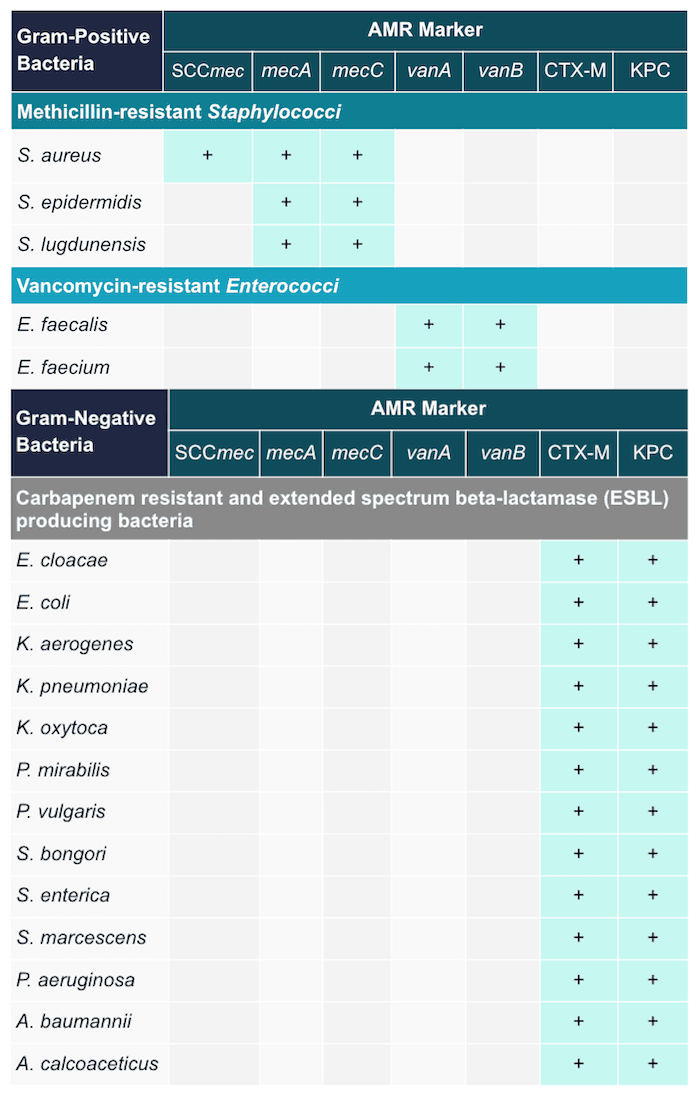
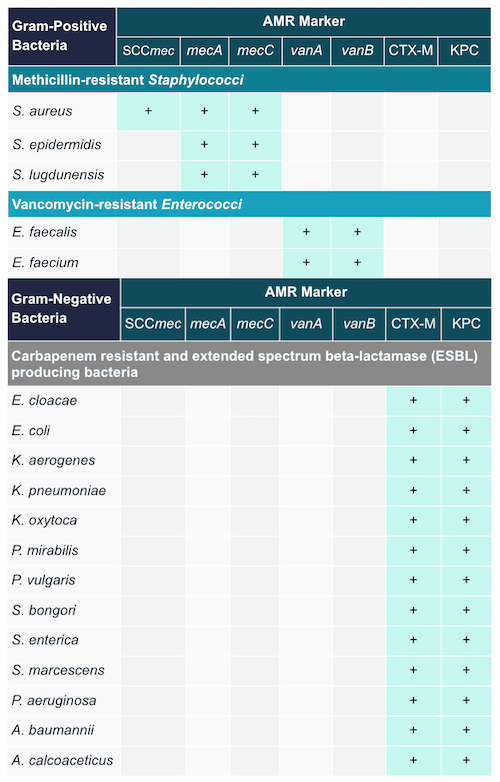
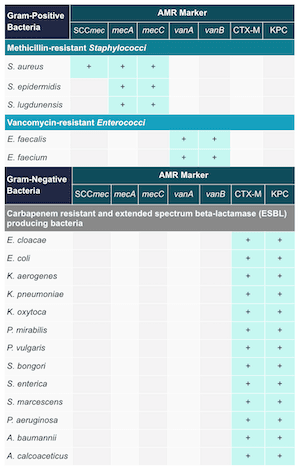
AMR Clinical Validation Performance
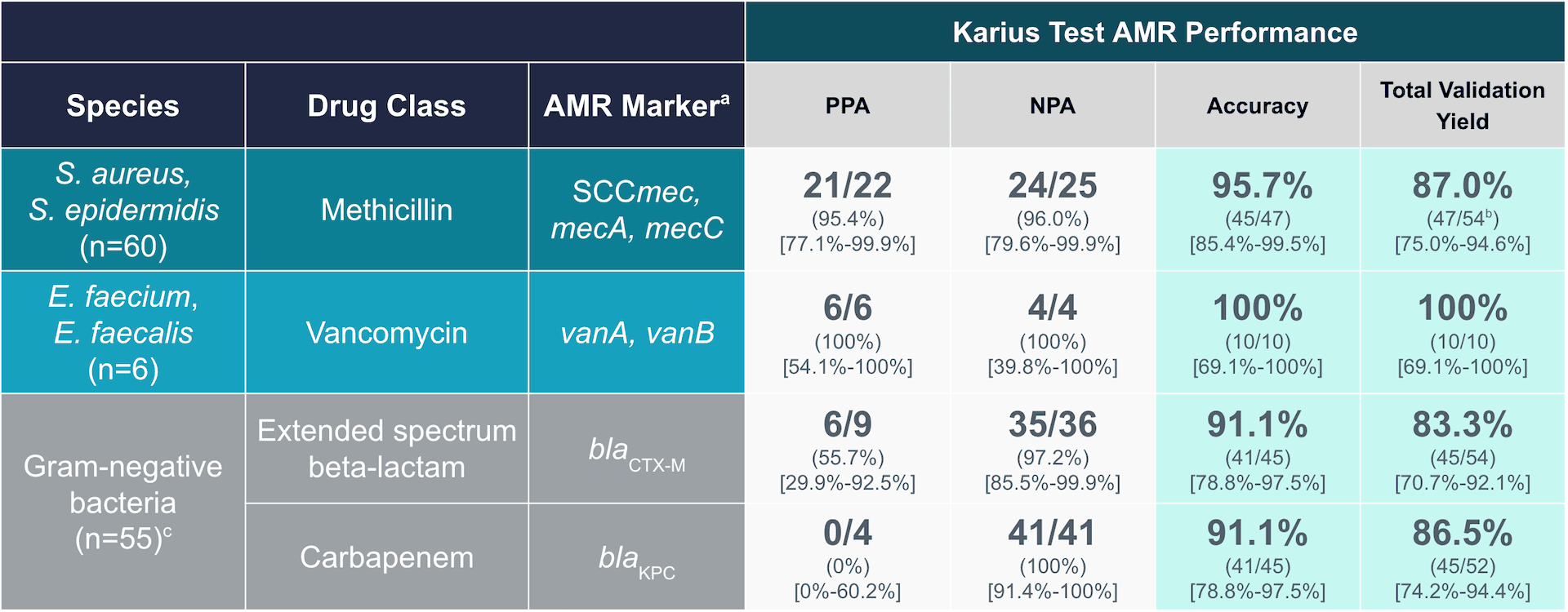
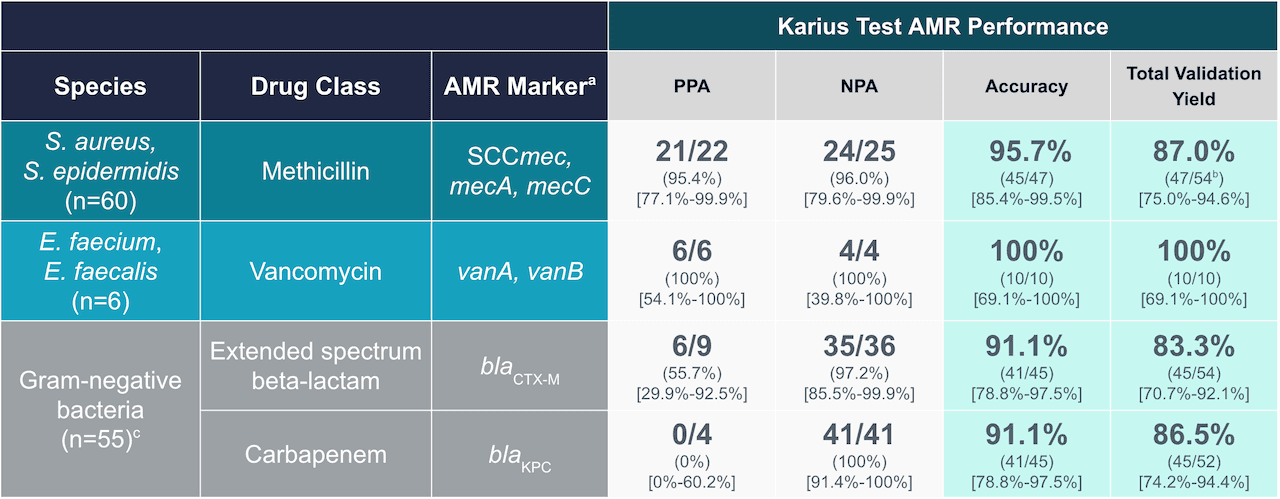

PPA = Positive Percent Agreement
NPA = Negative Percent Agreement
Total Validation Yield = Calculated by sum of presence and absence calls for an AMR marker, divided by the sum of all microbes in that drug class category that could have those markers
aNo mecC, vanB or blaKPC were detected
bSCCmec and mecA combined
c54 of these detections had adjudicated blaCTX-M phenotype label and 52 had adjudicated blaKPC phenotype label
*Samples chosen may not represent pathogen abundance distribution in targeted patient population. **False positives come from samples where orthogonal confirmation was limited. Orthogonal confirmation methods included: blood culture, Vitek, Microscan Walkaway, Agar dilution, E test gradient strip, and other microbiology tools
Supporting validation data is available on file. For more information, please contact help@kariusdx.com
Test Reporting
The Karius Spectrum test provides pathogen detection results typically one day after sample receipt, with AMR marker detection available within one day after pathogen results.
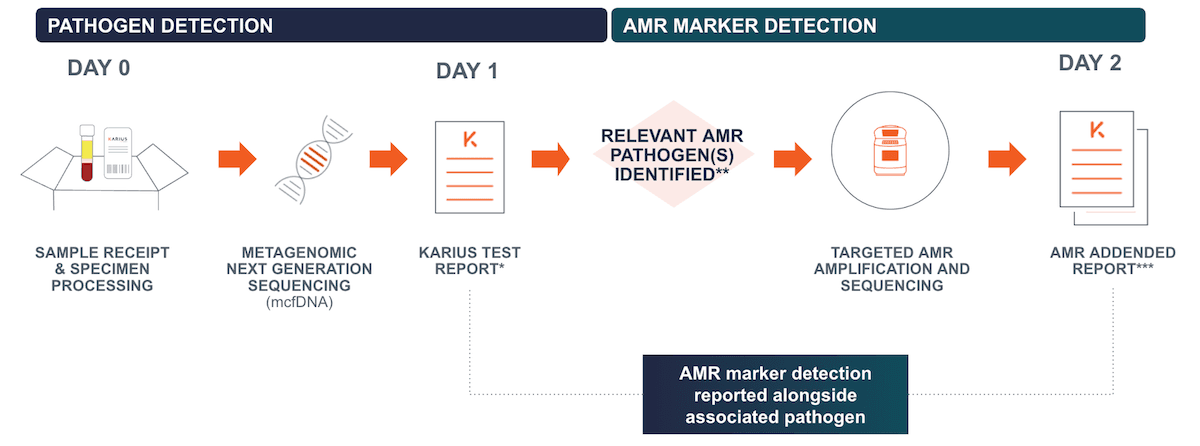
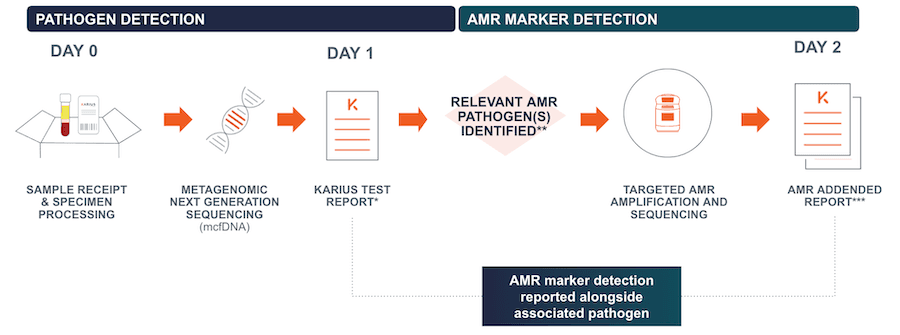
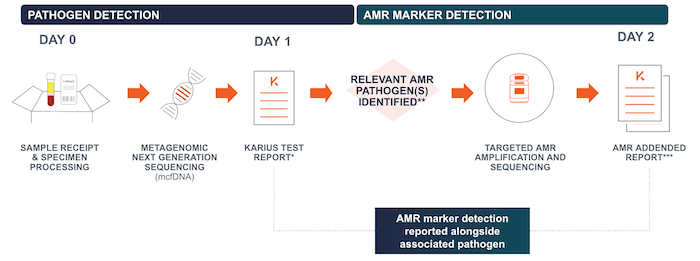
*>85% of specimens received by 8:30 AM (PT) Monday through Saturday are reported the next day. When S. aureus is detected, SCCmec AMR marker result may also be provided at this time; indeterminate results will undergo testing for mecA/mecC.
**If specimen volume is sufficient for testing and additional analytical conditions are met.
***Samples with Karius Spectrum test reported on Sunday would have AMR marker detection addended on Tuesday.



For more information about how Karius Spectrum test results are reported, visit For in-depth information about AMR product performance, download AMR Technical Sheet.
Ready to order the Karius Test?
References
- CDC: https://www.cdc.gov/drugresistance/biggest-threats.html
- FDA: https://www.fda.gov/drugs/information-consumers-and-patients-drugs/battle-bugs-fighting-antibiotic-resistance.
- Teillant, A et al. Lancet Infect Dis. 2015 Dec;15(12):1429-37. Epub 2015 Oct 22.
- Weinstein MP, et al. Laboratory Detection of Bacteremia and Fungemia, p.28. In: Carroll KC, Pfaller MA. Manual of Clinical Microbiology, 2019.